Transatlantic exhibition series honours artists lost to HIV/AIDS
40 years since cases of HIV/AIDS were first identified, David Zwirner gallery in New York and London pays tribute to artists whose lives were cut short by the disease, and the community who endured ostracism and stigma

Marking 40 years since the beginning of the HIV/AIDS crisis, David Zwirner gallery has organised a series of solo exhibitions across its New York and London locations, to honour the memory of artists whose lives were tragically cut short by the disease.
Titled ‘More Life’, the series explores responses to the crisis from the perspective of gay men, a community that disproportionately suffered the devastation of the virus.
The first round of shows, which opened on 24 June and will close this week, is dedicated to filmmaker Marlon Riggs, represented by the documentary Tongues Untied, which ‘affirms the lives and dignity of Black gay men’; Derek Jarman, whose seminal film Blue is accompanied by his paintings; the Silence=Death collective; and performance artist and photographer Mark Morrisroe.

Installation view of Derek Jarman’s Blue (1993), taken during the final sound mix at De Lane Lea, Dean Street, London, in late 1992.
The inclusion of the Silence=Death collective, best known for its poster that depicted a solitary pink triangle on a black background, gives artistic recognition to an enduring work of graphic design.
Artist and activist Avram Finkelstein was one of six people behind the collective. Now 69, he recalls how the many months of consideration that went into the poster gave it sustained political functionality. ‘I believe the continued interest in this work represents the renewed urgency for ongoing political resistance,’ he says.
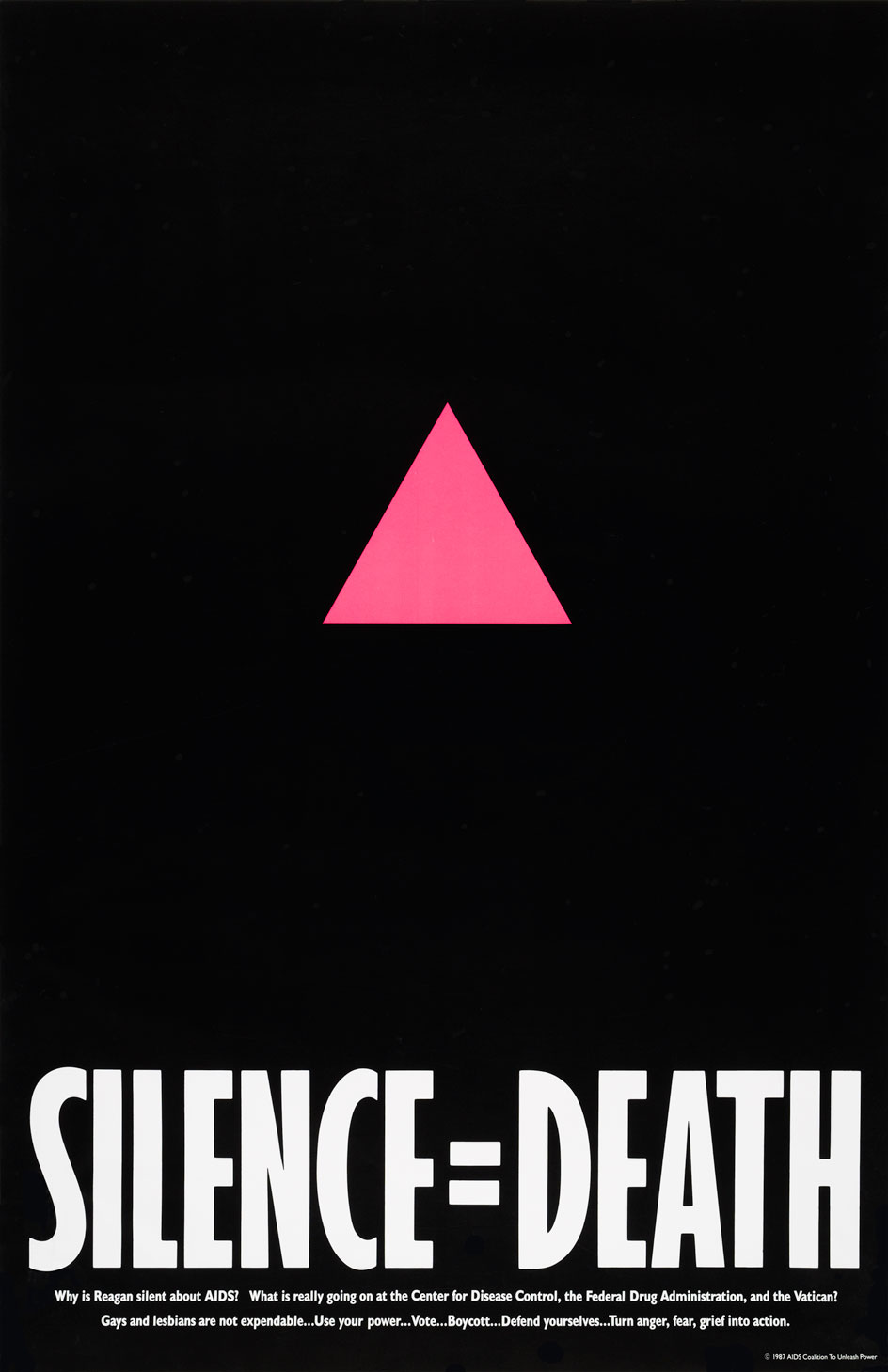
Silence = Death Project, Silence = Death, 1987.
‘Due to the continued work by social justice activists in multiple communities, I see the potential for change on the horizon. I’ve never given up on that potential, but thought I might not see it myself. I now feel I’m witnessing the earliest glimmer of its potency, and I’m grateful for that.’
‘More Life’ is the brainchild of the gallery’s senior director Robert Goff, director Thor Shannon, and associate director Alec Smith, who wished to ‘highlight the careers of lesser-known but incredibly talented artists lost to AIDS’.
Preparing for the shows ‘was a depressing exercise – so many creative lives lost felt overwhelming,’ recalls Goff.
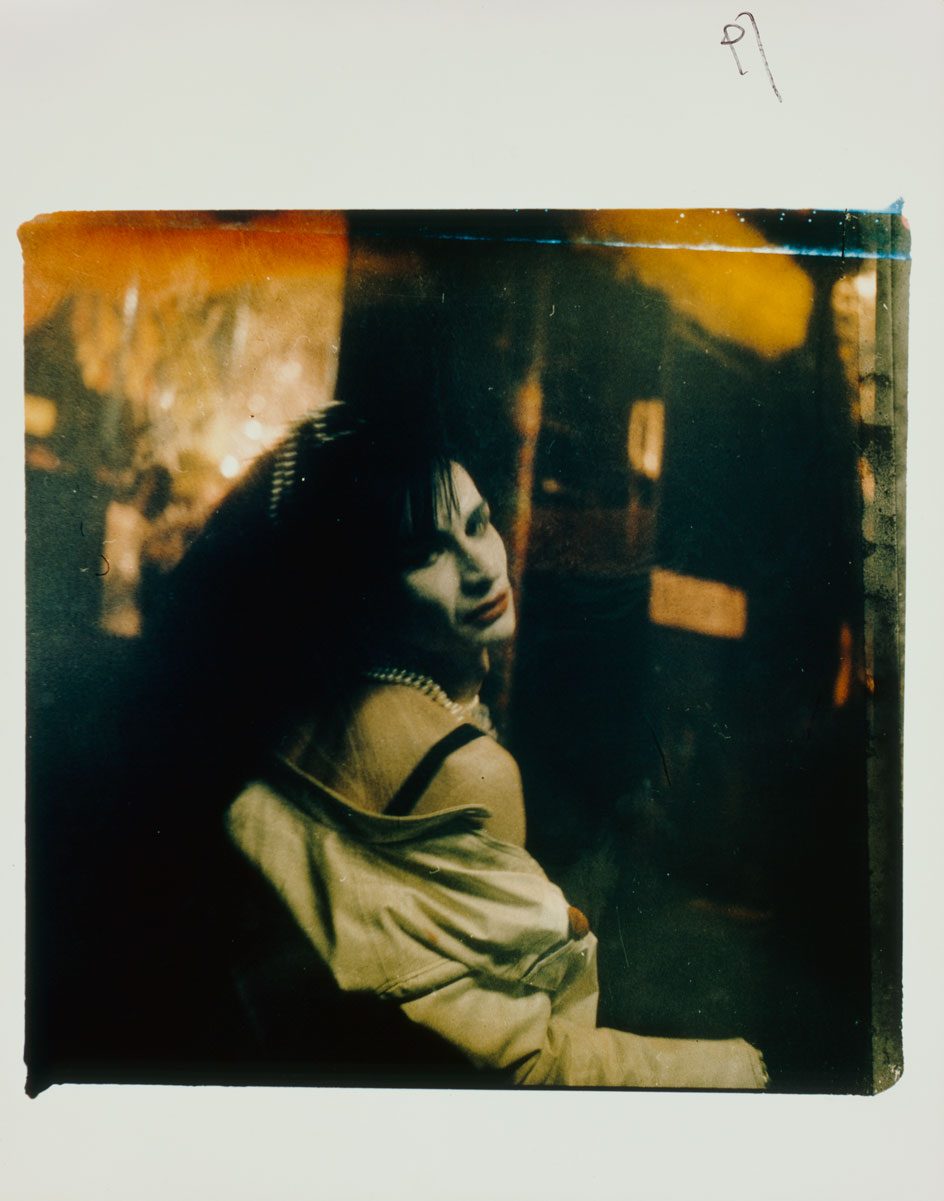
Mark Morrisroe, Sweet Raspberry/ Spanish Madonna, 1986.
Despite advances in gay rights and a gradual shift in attitudes towards AIDS, the disease ‘continues to be written out of history and mainstream culture,’ says Goff. ‘When artists who succumbed to AIDS are in the public eye, AIDS is often wholly omitted from the context. It remains both stigmatized and ostracized – there is much work to be done to change this.’
Likewise, Finkelstein hopes that the shows will impress on a younger generation to think of the early days of HIV and AIDS as their story: ‘This story belongs to all of us and to those not born yet, just like every other gesture of radical queer resistance.’
He adds, ‘Liberation history is important because rights that are given can also be taken away. Our story can’t be. My hope is that they will devour it, ask questions about it, remember it, share it, and absorb it into their own work.’
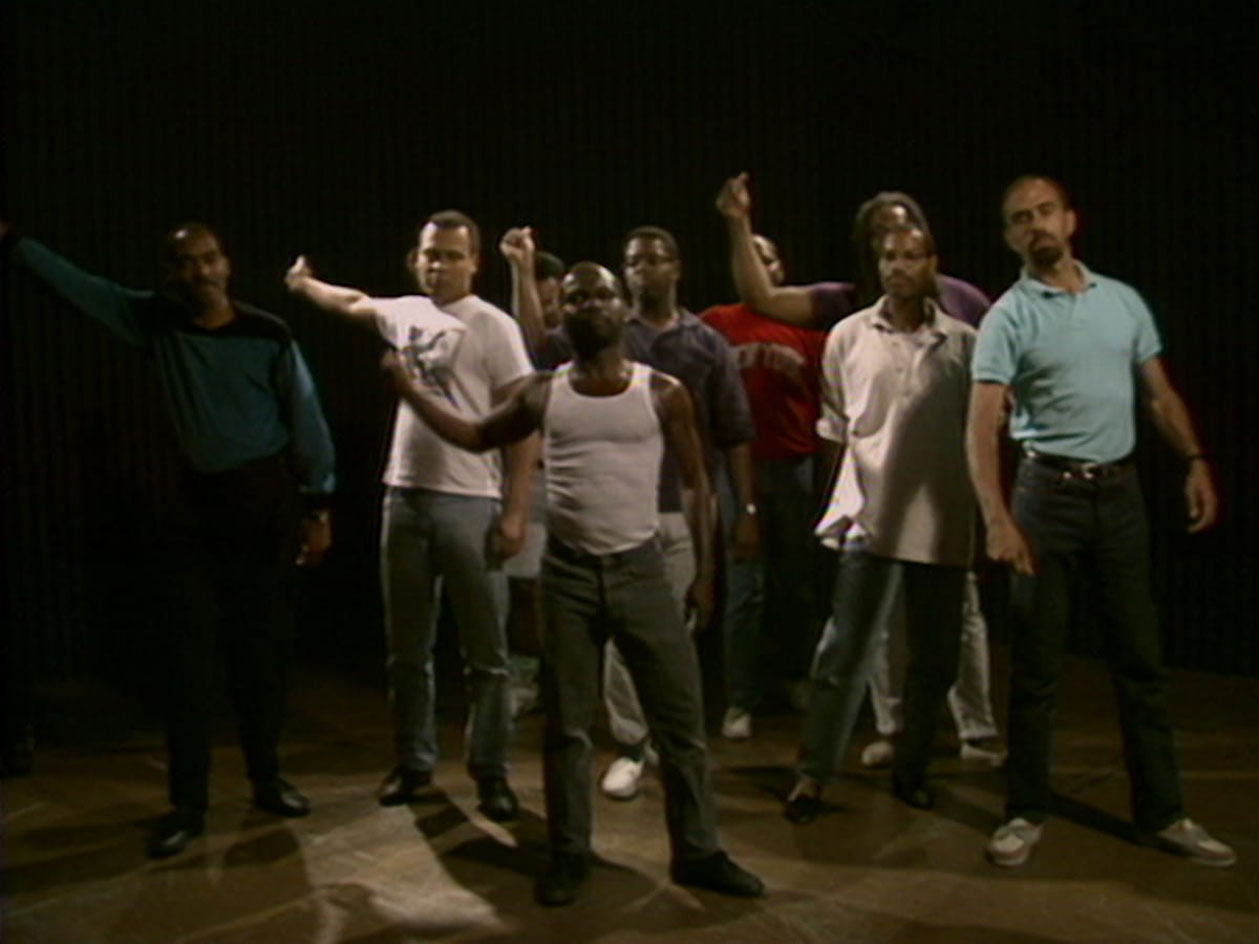
Production still from Marlon Riggs, Tongues Untied, 1989, video.
The ‘More Life’ series continues in September, with David Zwirner London hosting a presentation of Hugh Steers’ paintings, curated by actor and arts advocate Russell Tovey.
Meanwhile, the New York galleries will play host to shows on painters Jesse Murry (curated by fellow artist Lisa Yuskavage), Frank Moore (by critic Hilton Als), and Ching Ho Cheng (by independent curator Simon Wu). Some of the participating curators have personal connections to their artists: Yuskavage and Murry met at Yale University and became lifelong friends; while Als and Moore also knew each other for decades.
‘In fact, as part of Moore’s exhibition, we are including a painting from 1992 titled Debutantes, which depicts Als and Moore as children holding one another as they navigate a dystopian garden contextualized by Silence=Death posters in the background,’ adds Goff.
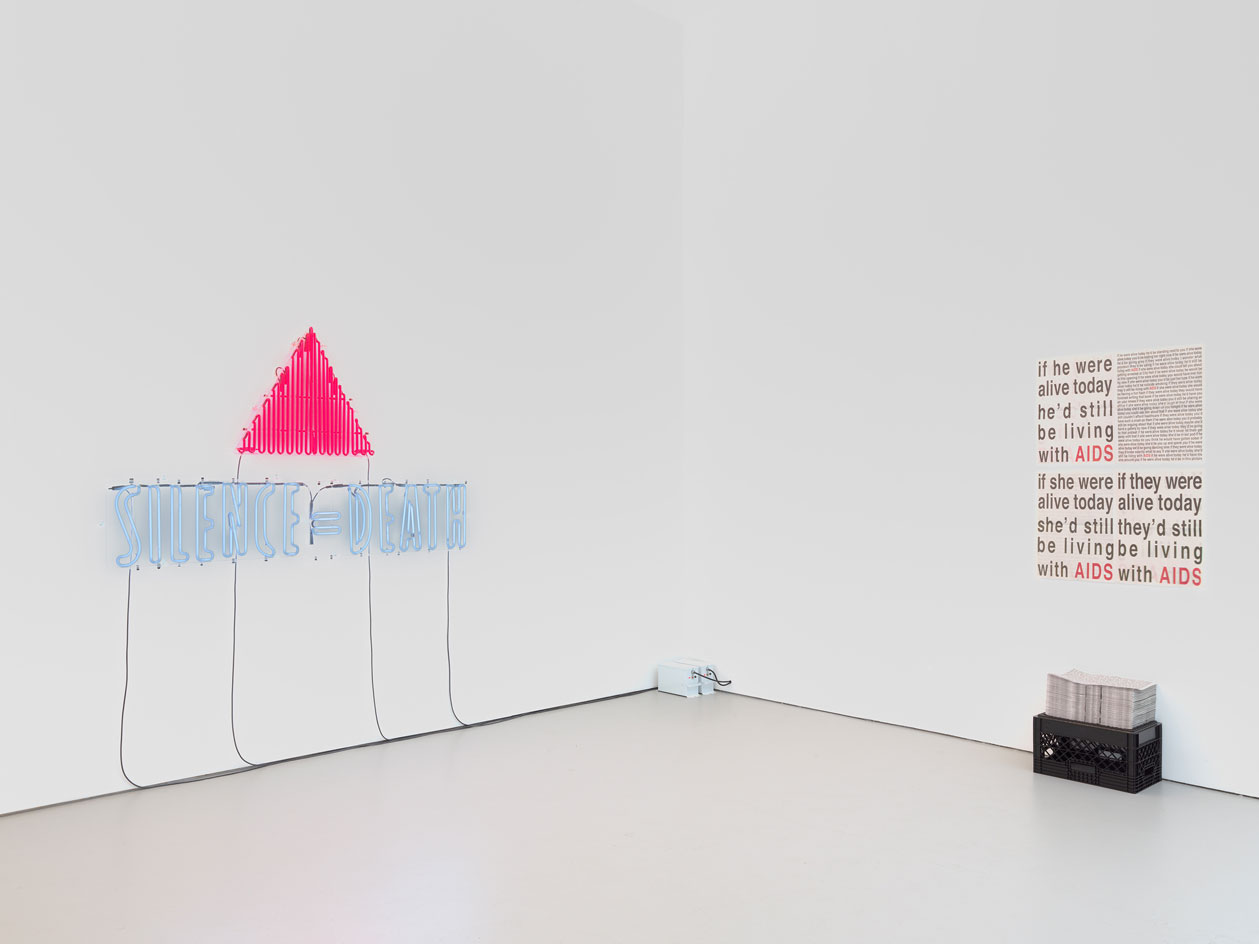
Installation view, 'More Life': Silence=Death, David Zwirner.
Goff is especially enthusiastic about introducing new audiences to Cheng, who ‘seems to have gone almost completely underground. He describes, ‘An Asian-American born in Cuba to an incredibly interesting family of diplomats and scholars, his ethereal work evokes that of Vija Celmins and Ed Ruscha.’
The title ‘More Life’ echoes the final lines of the seminal Tony Kushner play, Angels in America – in which protagonist Prior Walter declares his determination to continue his struggle against AIDS.
‘We think of this as a beginning – an entry point for more research, more exhibitions, and more voices contributing to this subject,’ says Goff. ‘There is so much more about these lives to uncover.’

Derek Jarman, Arse Injected Death Syndrome, 1993. Courtesy of Keith Collins Will Trust and Amanda Wilkinson Gallery, London
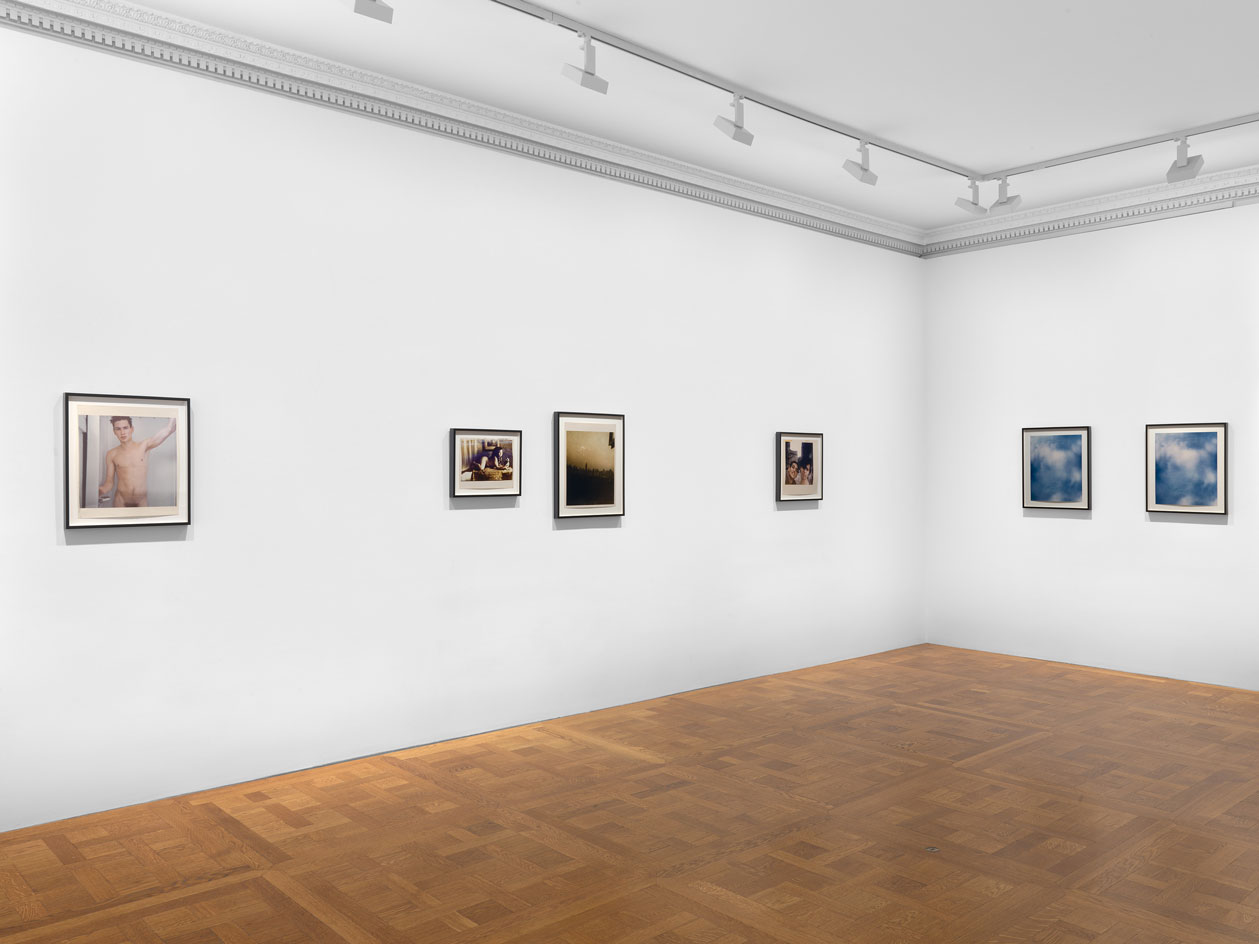
Installation view, 'More Life': Mark Morrisroe, curated by Ryan McGinley, New York.

Installation view, Silence = Death Project, AIDSGATE, 1987. Courtesy the Artist

Production still from Marlon Riggs, Tongues Untied, 1989, video.

Mark Fotopolous of ACT UP and his mom, the 20th anniversary of the Stonewall riots, participating in a renegade march up 6th avenue to Central Park, 1989.
INFORMATION
Receive our daily digest of inspiration, escapism and design stories from around the world direct to your inbox.
'More Life' will continue in September 2021 with exhibitions in David Zwirner's New York and London spaces. davidzwirner.com
TF Chan is a former editor of Wallpaper* (2020-23), where he was responsible for the monthly print magazine, planning, commissioning, editing and writing long-lead content across all pillars. He also played a leading role in multi-channel editorial franchises, such as Wallpaper’s annual Design Awards, Guest Editor takeovers and Next Generation series. He aims to create world-class, visually-driven content while championing diversity, international representation and social impact. TF joined Wallpaper* as an intern in January 2013, and served as its commissioning editor from 2017-20, winning a 30 under 30 New Talent Award from the Professional Publishers’ Association. Born and raised in Hong Kong, he holds an undergraduate degree in history from Princeton University.
-
 A compact Scottish home is a 'sunny place,' nestled into its thriving orchard setting
A compact Scottish home is a 'sunny place,' nestled into its thriving orchard settingGrianan (Gaelic for 'sunny place') is a single-storey Scottish home by Cameron Webster Architects set in rural Stirlingshire
-
 7 colours that will define 2026, from rich gold to glacier blue
7 colours that will define 2026, from rich gold to glacier blueThese moody hues, versatile neutrals and vivid shades will shape the new year, according to trend forecasters
-
 In Norway, discover 1000 years of Queer expression in Islamic Art
In Norway, discover 1000 years of Queer expression in Islamic Art'Deviant Ornaments' at the National Museum of Norway examines the far-reaching history of Queer art
-
 Out of office: The Wallpaper* editors’ picks of the week
Out of office: The Wallpaper* editors’ picks of the week'Tis the season for eating and drinking, and the Wallpaper* team embraced it wholeheartedly this week. Elsewhere: the best spot in Milan for clothing repairs and outdoor swimming in December
-
 Nadia Lee Cohen distils a distant American memory into an unflinching new photo book
Nadia Lee Cohen distils a distant American memory into an unflinching new photo book‘Holy Ohio’ documents the British photographer and filmmaker’s personal journey as she reconnects with distant family and her earliest American memories
-
 Out of office: The Wallpaper* editors’ picks of the week
Out of office: The Wallpaper* editors’ picks of the weekIt’s been a week of escapism: daydreams of Ghana sparked by lively local projects, glimpses of Tokyo on nostalgic film rolls, and a charming foray into the heart of Christmas as the festive season kicks off in earnest
-
 Ed Ruscha’s foray into chocolate is sweet, smart and very American
Ed Ruscha’s foray into chocolate is sweet, smart and very AmericanArt and chocolate combine deliciously in ‘Made in California’, a project from the artist with andSons Chocolatiers
-
 Inside the work of photographer Seydou Keïta, who captured portraits across West Africa
Inside the work of photographer Seydou Keïta, who captured portraits across West Africa‘Seydou Keïta: A Tactile Lens’, an exhibition at the Brooklyn Museum, New York, celebrates the 20th-century photographer
-
 Out of office: The Wallpaper* editors’ picks of the week
Out of office: The Wallpaper* editors’ picks of the weekFrom sumo wrestling to Singaporean fare, medieval manuscripts to magnetic exhibitions, the Wallpaper* team have traversed the length and breadth of culture in the capital this week
-
 María Berrío creates fantastical worlds from Japanese-paper collages in New York
María Berrío creates fantastical worlds from Japanese-paper collages in New YorkNew York-based Colombian artist María Berrío explores a love of folklore and myth in delicate and colourful works on paper
-
 Out of office: the Wallpaper* editors’ picks of the week
Out of office: the Wallpaper* editors’ picks of the weekAs we approach Frieze, our editors have been trawling the capital's galleries. Elsewhere: a 'Wineglass' marathon, a must-see film, and a visit to a science museum